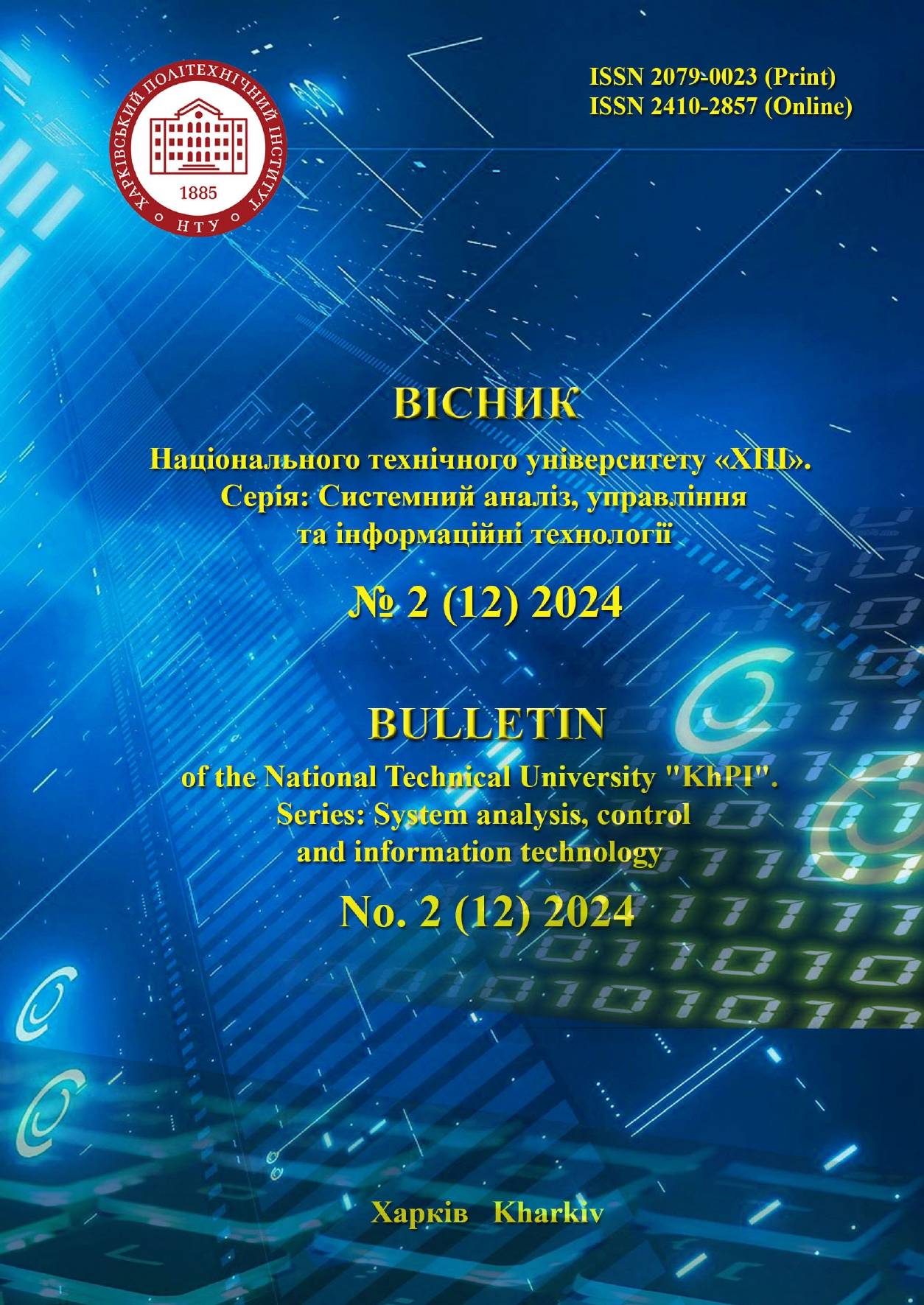SOFTWARE DEVELOPMENT AND RESEARCH FOR MACHINE LEARNING-BASED STRUCTURAL ERRORS DETECTION IN BPMN MODELS
DOI:
https://doi.org/10.20998/2079-0023.2024.02.08Keywords:
business process models, structural errors, BPMN structural analysis, machine learningAbstract
The most important tool for process management is business process modeling. Business process models allow to graphically represent the sequences of events, activities, and decision points that make up business processes. However, models that contain errors in depicting the business process structure can lead to misunderstanding of a business process, errors in its execution, and associated expenses. Thus, the aim of this study is to ensure the comprehensibility of business process models by detecting structural errors in business process models and their subsequent correction. During the analysis of the Business Process Management (BPM) lifecycle, it was found that the created business process models do not have a stage of control for the presence of errors in them. Therefore, the paper analyzes and improves the BPM lifecycle using the proposed approach. In the improved BPM lifecycle, it is proposed to take into account the correctness validation stage of business process models using the developed software. The paper proposes to process created BPMN (Business Process Model and Notation) models as connected directed graphs. To detect errors in business process models, one of the Machine Learning methods, K-Nearest Neighbors, is chosen, which is a fairly simple and effective classification method. The study also includes the software design and development, its performance validation, and usage to solve the given problem. To analyze the obtained results, the confusion matrix was used and the corresponding quality metrics were calculated. The obtained results confirm the suitability of the developed software for detecting structural errors in business process models. This web application, which is based on the created classification model, allows all interested users to upload business process models in BPMN 2.0 format, view the uploaded models, and analyze them for structural errors.
References
Reijers H. A. Business Process Management: The evolution of a discipline. Available at: https://doi.org/10.1016/j.compind.2021.103404 (accessed: 17.09.2024).
Haj Ayech B., Ghannouchi S. A., El Hadj Amor E. A. Extension of the BPM lifecycle to promote the maintainability of BPMN models. Available at: https://doi.org/10.1016/j.procs.2021.01.239 (accessed: 17.09.2024).
Yahya F., Boukadi K., Ben-Abdallah H. Improving the quality of Business Process Models: Lesson learned from the State of the Art. Available at: https://doi.org/10.1108/BPMJ-11-2017-0327 (accessed: 17.09.2024).
Fotoglou C. et al. Complexity clustering of BPMN models: initial experiments with the K-means algorithm. Available at: https://doi.org/10.1007/978-3-030-46224-6_5 (accessed: 17.09.2024).
Corradini F. et al. Correctness checking for BPMN collaborations with sub-processes. Available at: https://doi.org/10.1016/j.jss.2020.110594 (accessed: 17.09.2024).
IDEF0 Function Modeling. Available at: https://doi.org/10.1007/978-3-540-89556-5_5 (accessed: 17.09.2024).
O’Regan G. Graph Theory. Available at: https://doi.org/10.1007/978-3-031-26212-8_7 (accessed: 17.09.2024).
BPMN, Version 2.0. Available at: https://www.omg.org/spec/BPMN/2.0/PDF (accessed: 17.09.2024).
Avila D. T., dos Santos R. I., Mendling J., Thom L. H. A systematic literature review of process modeling guidelines and their empirical support. Available at: https://doi.org/10.1108/BPMJ-10-2019-0407 (accessed: 17.09.2024).
K-Nearest Neighbors. Available at: https://doi.org/10.1007/978-3-642-38652-7_2 (accessed: 17.09.2024).
Distance Measures. Available at: https://doi.org/10.1007/978-3-642-04898-2_626 (accessed: 17.09.2024).
Unhelkar B. Software Engineering with UML. Available at: https://doi.org/10.1201/9781351235181 (accessed: 17.09.2024).
BPMN for research. Available at: https://github.com/camunda/bpmn-for-research (accessed: 17.09.2024).
Model Collection of the Business Process Management Academic Initiative. Available at: https://doi.org/10.5281/zenodo.3758705 (accessed: 17.09.2024).
Python. Available at: https://www.python.org/ (accessed: 17.09.2024).
Scikit-learn. Available at: https://scikit-learn.org/ (accessed: 17.09.2024).
Confusion Matrix. Available at: https://doi.org/10.1007/978-0-387-30164-8_157 (accessed: 17.09.2024).
Ting K. M. Encyclopedia of Machine Learning. Available at: https://doi.org/10.1007/978-0-387-30164-8_652 (accessed: 17.09.2024).
Downloads
Published
How to Cite
Issue
Section
License

This work is licensed under a Creative Commons Attribution 4.0 International License.
Authors who publish with this journal agree to the following terms:
- Authors retain copyright and grant the journal right of first publication with the work simultaneously licensed under a Creative Commons Attribution License that allows others to share the work with an acknowledgement of the work's authorship and initial publication in this journal.
- Authors are able to enter into separate, additional contractual arrangements for the non-exclusive distribution of the journal's published version of the work (e.g., post it to an institutional repository or publish it in a book), with an acknowledgement of its initial publication in this journal.
- Authors are permitted and encouraged to post their work online (e.g., in institutional repositories or on their website) prior to and during the submission process, as it can lead to productive exchanges, as well as earlier and greater citation of published work (See The Effect of Open Access).


